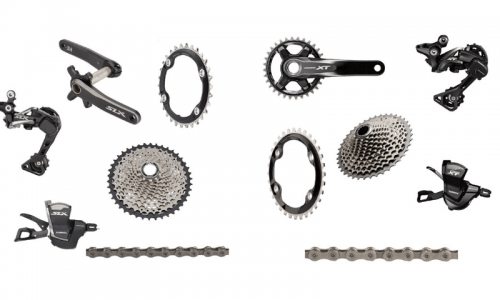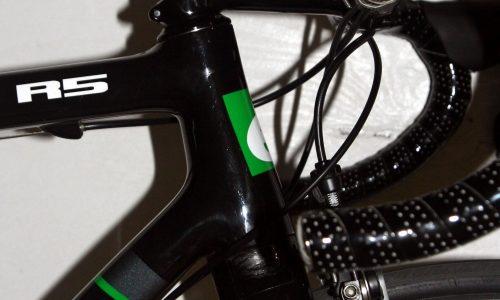Cycling is an incredible sport that promotes fitness, gets you outside into nature, and can make you a huge amount of new friends through amazing experiences. Cycling is a low-impact sport and a great way to improve cardiovascular fitness, help you lose weight, and has many other benefits.
Cycling is not a perfectly natural movement for people compared to, say, walking or running; because of this, you can get some unwanted effects on the body during and after. Knee pain is one of the most common issues for cyclists and is actually very easy to fix and avoid.
Why are the knees so important for cycling?
When cycling, the knee area has a vital job. It has to connect many muscles together and control the downward force into one singular place. This is exactly what happens when cycling. A lot of pressure goes on in the joints, muscles, and ligaments.
What muscles connect to the knee for cycling?
 As far as muscles that connect to the knee go for cycling, you have a lot to think about.
As far as muscles that connect to the knee go for cycling, you have a lot to think about.
Starting with the primary muscles and following with the secondary, here’s what you need to know.
Primary
Quadriceps
This group of muscles is at the top and front of your leg. The Quadriceps consist of four different muscles and are one of the most powerful groups in the body.
Hamstrings
This group of muscles is at the back of your legs and contributes to your power and flexibility.
Gluteals
The gluteals are the biggest singular muscle on your body and sit on the rear of your legs and make up your bum.
Secondary
Calf Muscles
The calf muscles sit at the back of your legs and help stabilize the foot and control the ankle.
Abdominals
Also known as the abs, these sit inside your stomach, keep core stability, and help the body control the bike.
Erector Spinae
These muscles run all up your back and help support the body to stay upright. It works heavily in conjunction with the abdominals.
Ligaments in the Knee
Anterior cruciate ligament (ACL)
This ligament is in the middle of the knee
Posterior cruciate ligament (PCL)
This ligament is in the back of the knee
Medial collateral ligament (MCL)
Creates stability in the inner knee
Lateral collateral ligament (LCL)
Creates stability to the outer knee
The Joint
The joining connects through three bones which are the femur, the tibia, and the patella.
What Causes My Knee Pain?
So as you can see, a huge amount is going on in the knee, and many parts must work together properly.
Most injuries can be put into one of these three categories, and luckily most of these can be fixed with rest and light medication if required. Here are the most common causes of knee injuries in cycling.
Inflammation
Inflammation is when muscles become swollen and compress the area they are in, causing limited mobility and can cause the other muscles not to function properly.
Damage
If you rip a part of a muscle or ligament, you will be in a lot of pain as the broken muscle will struggle to work, and this will cause other muscles to compensate.
Overuse
Overuse without proper rest and care can cause knee pain. The knee is joint and, if overused, can become compromised.
How to stop Knee Pain and Weakness when cycling?
 Although many cyclists think their cycling is over as soon as they get knee pain. It’s actually a pretty easy issue to fix and even easier to prevent.
Although many cyclists think their cycling is over as soon as they get knee pain. It’s actually a pretty easy issue to fix and even easier to prevent.
Here’s our top tip for avoiding knee pain when cycling.
Bikefit
A bike fit will get your body in the correct place when riding a bike. One of the biggest causes of knee pain when it comes to cycling is not being in the right position.
If you go to a good bike fitter, they will get your saddle height and reach correct, which will help you pedal more effectively and avoid injury and weakness.
Training Plan
One thing many cyclists neglect is having a rough training plan. We see a lot of cyclists go from doing 1-2 hour rides and then go straight into a 6-hour ride.
Building up time and mileage goes a long way to helping your knees cope on longer rides and avoiding injury. The most common issue for people getting injured and feeling weak is overuse when they are not ready.
Strength and Conditioning
An amazing way to strengthen your joints and muscles is to do strength and conditioning.
A session or two a week of lunges, squats, glute bridges, and various core work will go a very long way to helping you avoid knee pain and keep those legs feeling strong at all times.
Proper Fueling
Fuelling is one of the hardest parts of cycling, especially when it comes to long distances, and if done incorrectly can make your knees feel extremely weak.
Long-term can actually cause injury in the worst-case scenarios. Drinking roughly 300- 700ml of water an hour and having around 30-60 grams of carbohydrates per hour will massively help prevent weakness.
Adequate Recovery
Finally, the most important tip is recovery. It would be best if you gave your body time after each ride to recover for the next ride properly. Recovery helps the muscles heal properly and gives them the ability to strengthen themselves.
If you don’t recover enough, you will feel weak throughout the next ride, which can cause you to lose fitness and risk injury.
Conclusion
Knee pain and weakness is a common issues for many cyclists and can be easily avoided. We heavily use our knees when cycling, and we must take steps to protect them and keep them strong.

Robbie Ferri has spent years working in a bike shop, has worked with industry leading brands on product creation, has been a semi pro athlete, and is a fully qualified strength and conditioning coach. He has broken World Records, bikepacked all over the World and raced ultra distance at a top-level.




